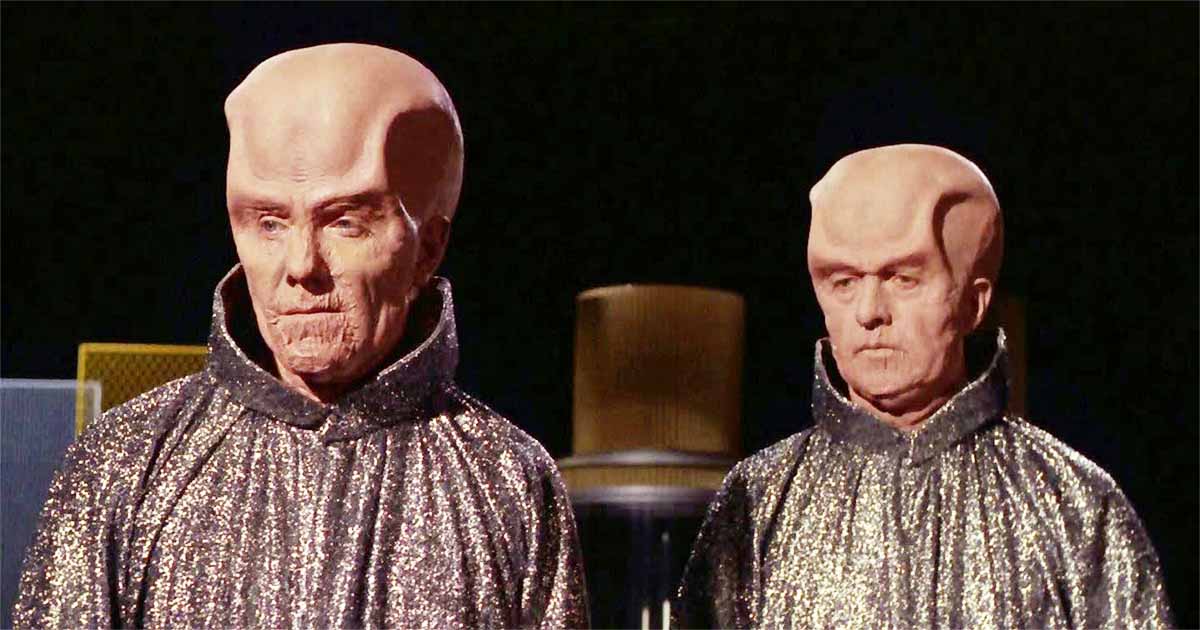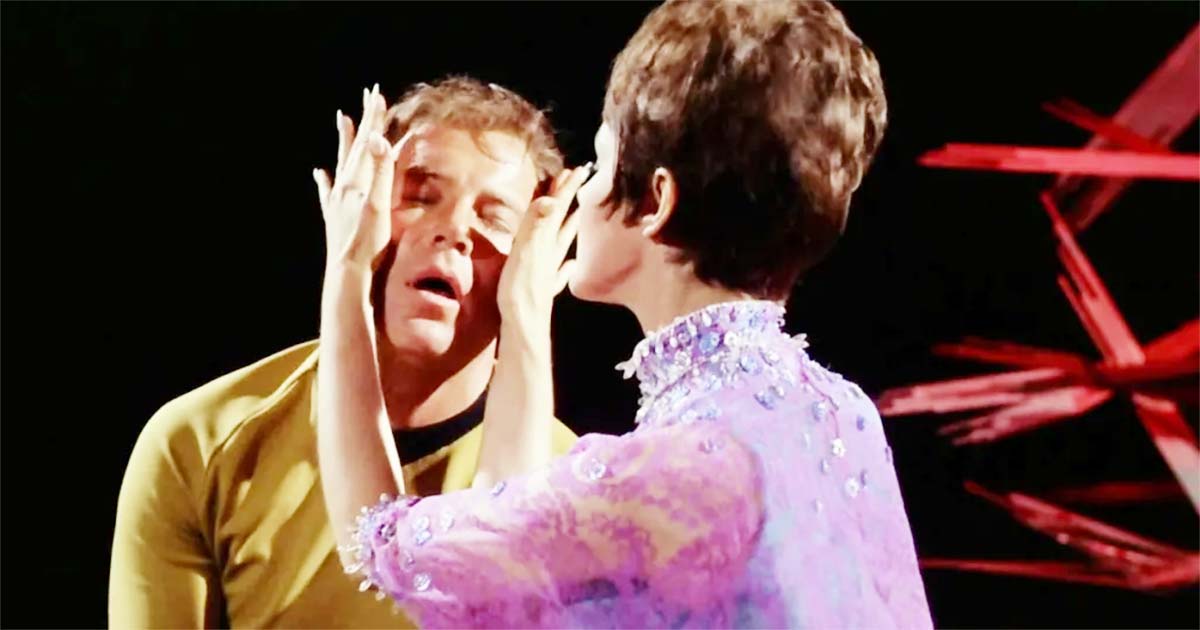The Quiet Horror and Redemption of "The Empath"
Would you suffer out of compassion? It is one of the themes explored in this BBC-banned episode of "Star Trek: The Original Series."

"Star Trek: The Original Series" is no stranger to moral dilemmas and thought-provoking narratives, but few episodes delve into psychological and emotional suffering as deeply as "The Empath."
This haunting tale, banned by the BBC for more than two decades, confronts viewers with themes of sacrifice, empathy, and the limits of endurance. Its stark minimalism and unsettling tone set it apart from other entries in the franchise, leaving a lasting impression on those who experienced it.
Why did this episode provoke such discomfort? To understand, we must explore the trials faced by Captain Kirk, Spock, and Dr. McCoy on a barren world ruled by unseen torment.
A World of Darkness and Pain
The crew of the "Enterprise" responds to a mysterious signal, only to be captured by the Vians, a powerful and enigmatic alien species.
In a shadowy, featureless laboratory, Kirk, Spock, and McCoy meet Gem, a mute woman with the extraordinary ability to absorb and heal the pain of others.
The Vians have orchestrated a series of sadistic experiments designed to test the capacity for self-sacrifice. They inflict both physical and psychological suffering on the crew to push Gem to embrace her role as a savior. The atmosphere is bleak and claustrophobic, with minimal sets and lighting emphasizing the characters' vulnerability.

The crew's ordeal becomes a grim moral crucible. McCoy's willingness to sacrifice himself for Gem's survival encapsulates the episode's core question —how much suffering is justified in the pursuit of a greater moral good?
Sacrifice, Empathy, and the Nature of Morality
"The Empath" explores the transformative power of empathy. Gem's ability to absorb others' pain serves as both a literal and symbolic manifestation of compassion. Through her silent acts of healing, the episode challenges viewers to reflect on the ethical weight of selflessness.
The Vians, in contrast, represent a cold, utilitarian mindset. They believe that by testing Gem's capacity for sacrifice, they can determine whether her species is worthy of survival. Their methods provoke ethical questions about the limits of scientific detachment and the morality of using suffering as a tool for enlightenment.
This dichotomy between the Vians' cruelty and Gem's quiet strength reinforces a recurring theme in "Star Trek" —true power lies in empathy, not domination. The episode's emotional intensity, however, proved too much for some viewers and ultimately led to its censorship.

Protecting Audiences from Emotional Distress
When "The Empath" aired in the late 1960s, television networks faced increasing scrutiny over depictions of violence and psychological trauma. The BBC's decision to ban the episode was driven by concerns about its disturbing imagery and themes. Viewer complaints highlighted the intense suffering portrayed on screen, particularly McCoy's physical torment and Gem's emotional agony.
The episode's abstract and theatrical presentation heightened its psychological impact. Unlike other banned episodes that relied on graphic violence or overt horror, "The Empath" unsettled audiences through implication and atmosphere.
Over time, attitudes toward such content evolved. By the 1990s, the BBC lifted the ban, allowing a new generation of viewers to engage with the episode's complex narrative. In a media landscape shaped by series like "The X-Files" and "Doctor Who," audiences had become more receptive to darker and more introspective storytelling.
The Line Between Artistic Intensity and Audience Sensitivity
"The Empath" stands alongside other Star Trek episodes banned by the BBC, including "Miri," "Plato's Stepchildren," and "Whom Gods Destroy." Each of these stories confronted viewers with unsettling themes of suffering, madness, or humiliation.
However, "The Empath" is unique in its minimalist approach. Rather than depicting graphic violence, the episode uses sparse sets and shadowy visuals to create an oppressive atmosphere. This reliance on emotional and psychological tension distinguishes it from episodes like "Plato's Stepchildren," which employed more overt depictions of cruelty.
The question of censorship in science fiction often revolves around the balance between artistic expression and viewer protection. "The Empath" exemplifies how deeply emotional storytelling can challenge both creators and audiences to confront difficult truths.
An Image for Its Time
The cultural landscape of the 1960s shaped both the content and reception of "The Empath." The decade's social and political upheaval gave rise to narratives that explored themes of sacrifice, resilience, and moral responsibility. As civil rights, hedonism, and antiwar movements gained momentum, stories about empathy and selflessness resonated deeply with humanistic audiences.
Gem's silence and suffering reflect the era's fascination with both existential dread and the hope for redemption. The episode's theatrical style, influenced by minimalistic stage productions, underscores its allegorical nature. By stripping away extraneous details, the story forces viewers to focus on the emotional core of its characters.
Why The Empath Still Matters
In spite of its initial controversy, "The Empath" remains a poignant and relevant entry in the "Star Trek" canon. Its exploration of empathy, trauma, and healing speaks to contemporary concerns about mental health and the human capacity for resilience.
Gem's character endures as a powerful symbol of quiet strength. In an era where empathy is increasingly recognized as a vital social value, her story continues to inspire viewers. The episode's emphasis on moral courage aligns with "Star Trek's" broader mission to promote compassion and justice.
By confronting viewers with the consequences of suffering and sacrifice, "The Empath" invites reflection on the nature of humanity. It challenges us to consider how far we would go to protect others and what it truly means to endure.
A Tale of Silent Strength and Redemption
"The Empath" exemplifies science fiction's ability to explore profound moral and emotional questions. The BBC's ban, while rooted in concerns for audience well-being, underscored the episode's power to provoke deep reflection.
Today, the story stands as a testament to "Star Trek's" legacy of challenging viewers to confront both the darkness and light within the human spirit. In a universe where compassion can triumph over cruelty, "The Empath" remains a beacon of hope and redemption.

